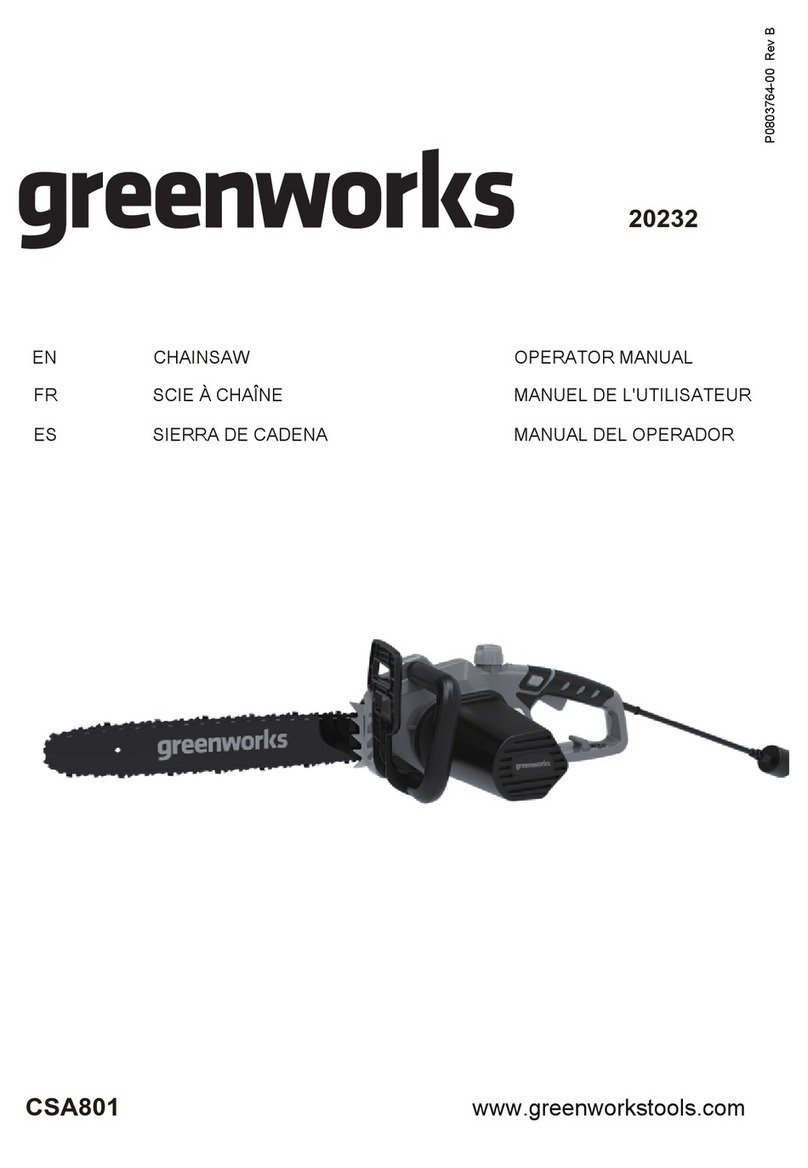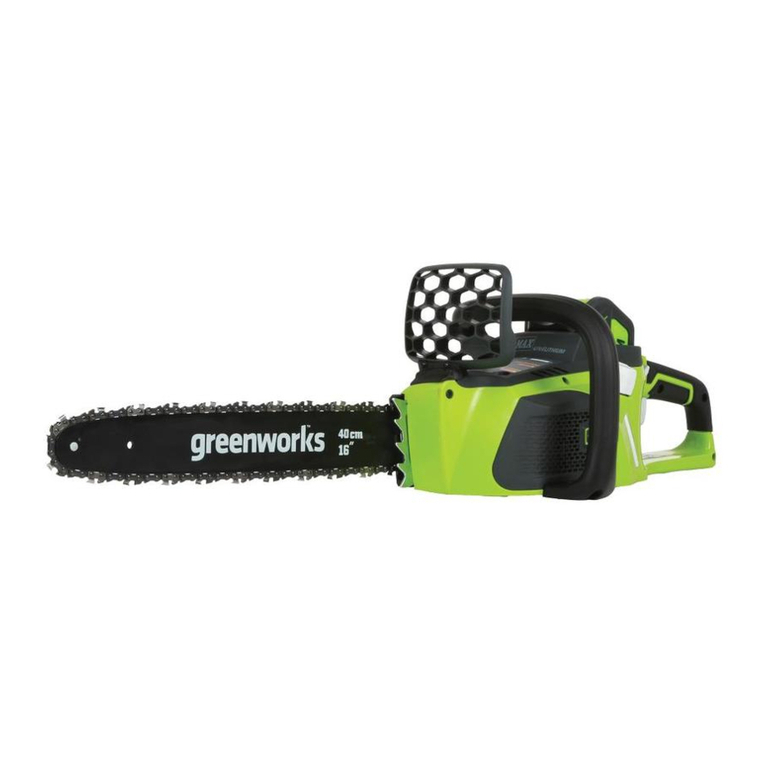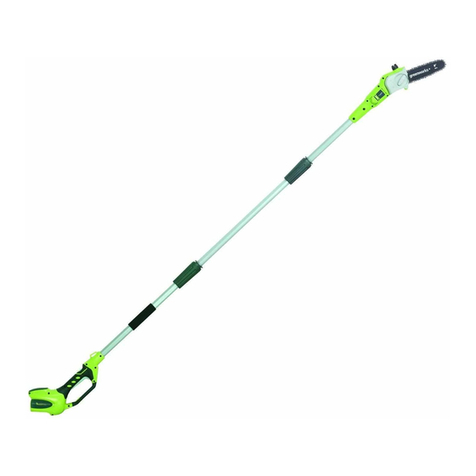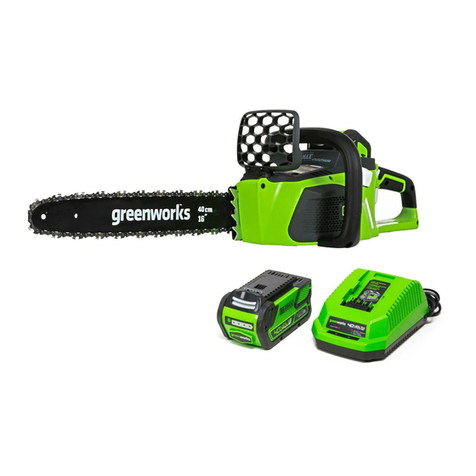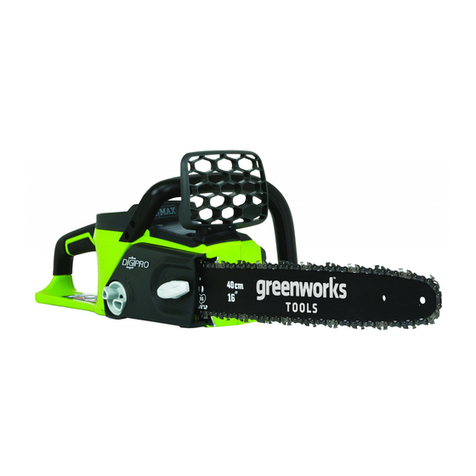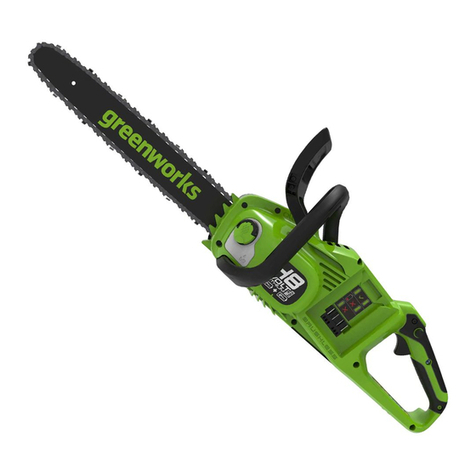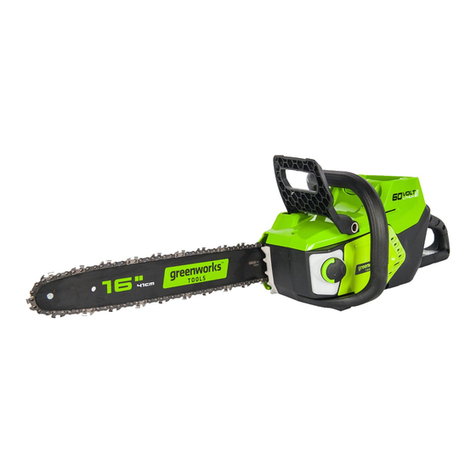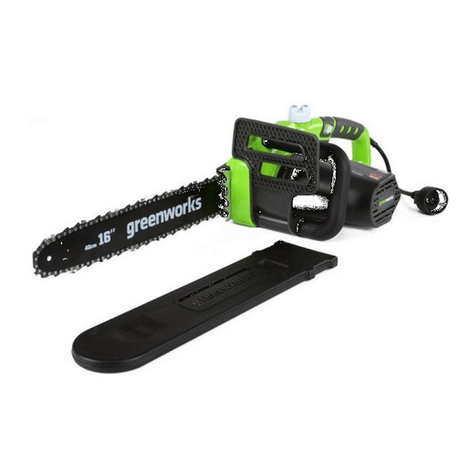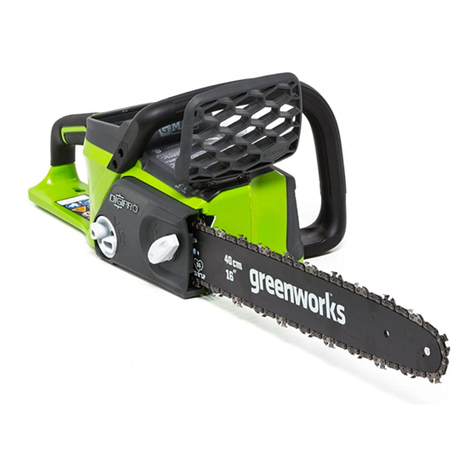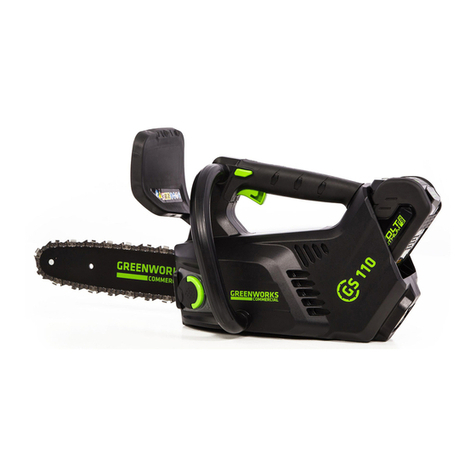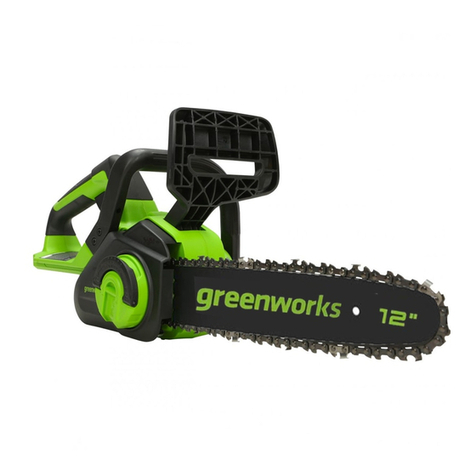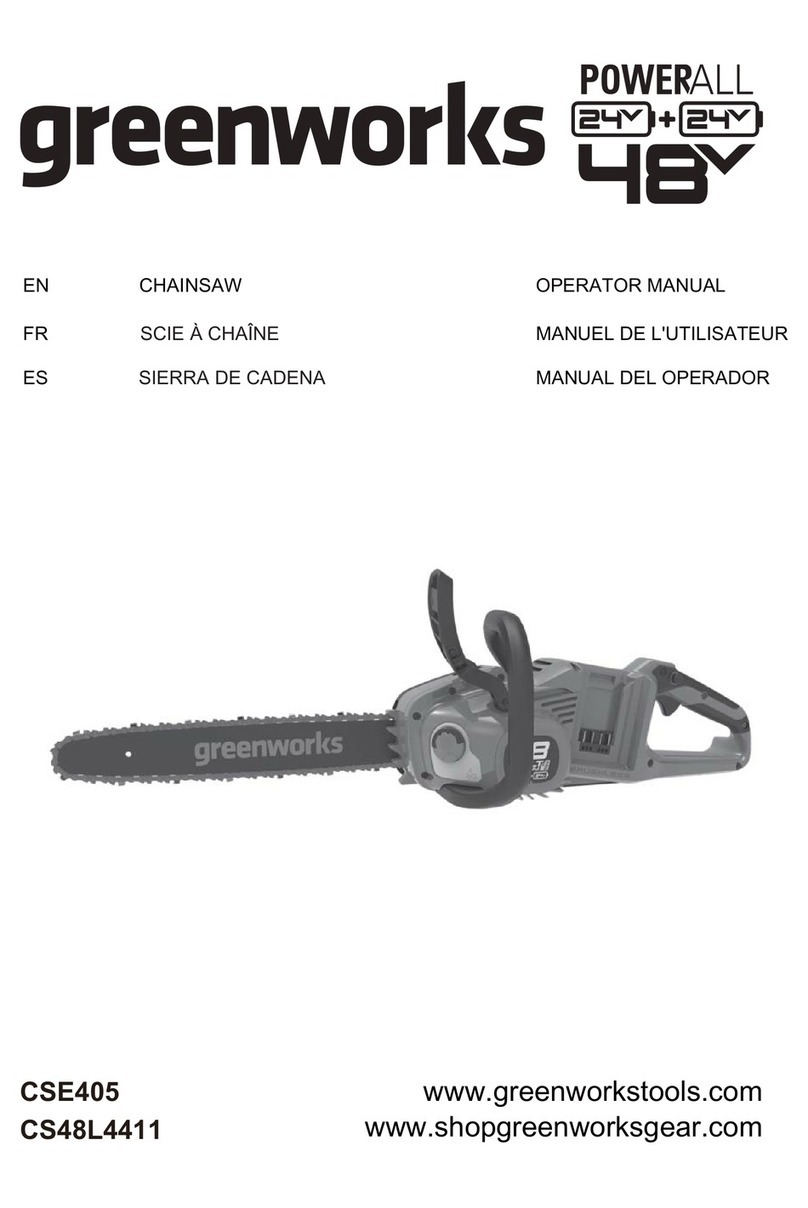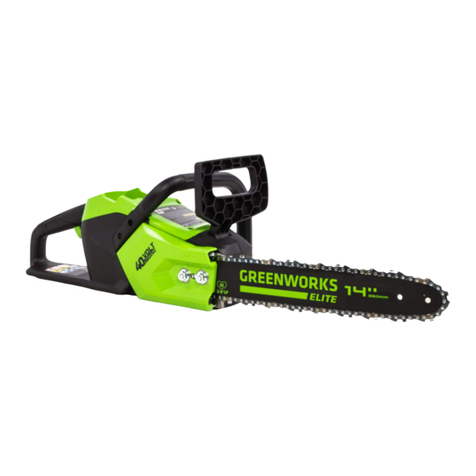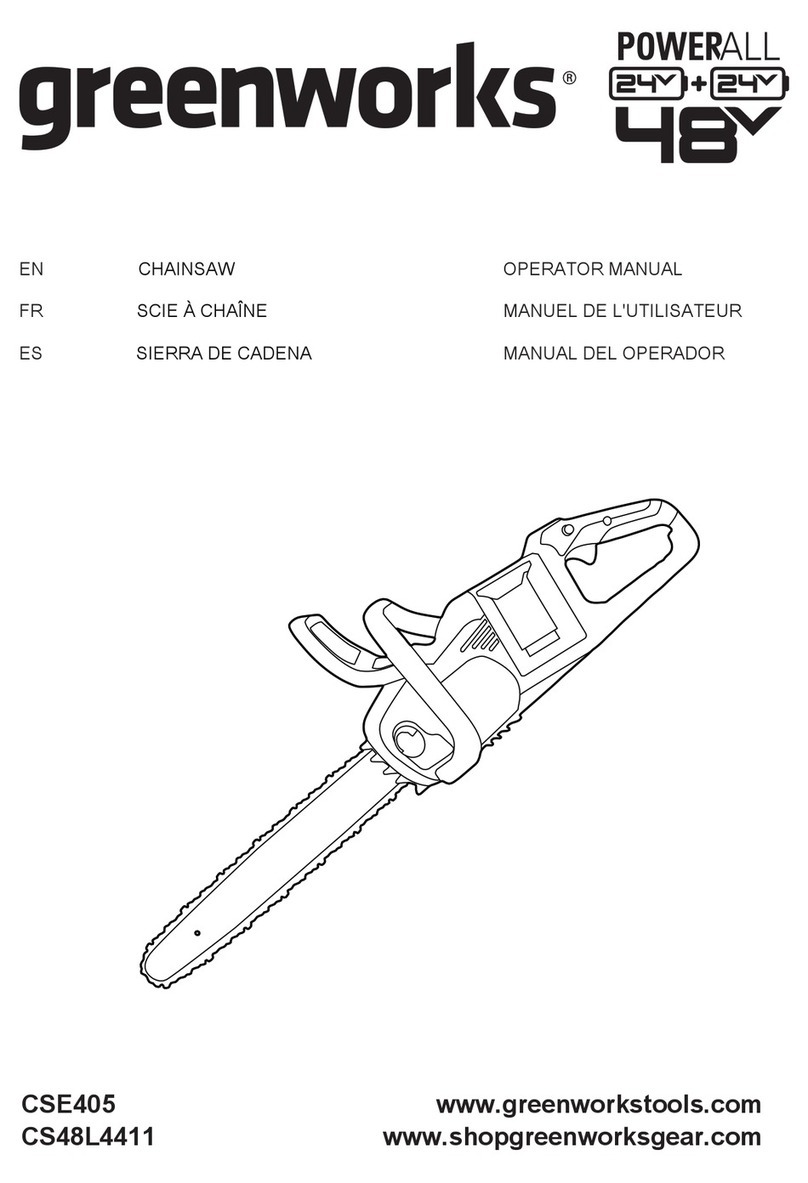
•If devices are provided for the connection of dust
extraction and collection facilities, ensure these are
connected and properly used. Use of dust collection can
reduce dust related hazards.
2.4 POWER TOOL USE AND CARE
•Do not force the power tool. Use the correct power
tool for your application. The correct power tool will do
the job better and safer at the rate for which it was
designed.
•Do not use the power tool if the switch does not turn it
on and off. Any power tool that cannot be controlled with
the switch is dangerous and must be repaired.
•Disconnect the plug from the power source and/or the
battery pack from the power tool before making any
adjustments, changing accessories, or storing power
tools. Such preventive safety measures reduce the risk of
starting the power tool accidentally.
•Store idle power tools out of the reach of children and
do not allow persons unfamiliar with the power tool or
these instructions to operate the power tool. Power
tools are dangerous in the hands of untrained users.
•Maintain power tools. Check for misalignment or
binding of moving parts, breakage of parts and any
other condition that may affect the power tool’s
operation. If damaged, have the power tool repaired
before use. Many accidents are caused by poorly
maintained power tools.
•Keep cutting tools sharp and clean. Properly
maintained cutting tools with sharp cutting edges are less
likely to bind and are easier to control.
•Use the power tool, accessories and tool bits etc. in
accordance with these instructions, taking into
account the working conditions and the work to be
performed. Use of the power tool for operations different
from those intended could result in a hazardous situation.
2.5 SERVICE
•Have your power tool serviced by a qualified repair
person using only identical replacement parts. This
will ensure that the safety of the power tool is maintained.
3 CHAINSAW SAFETY
WARNINGS
•Keep all parts of the body away from the saw chain
when the chainsaw is operating. Before you start the
chainsaw, make sure the saw chain is not in contact
with anything. A moment of inattention while operating
chainsaws may cause entanglement of your clothing or
body with the saw chain.
•Always hold the chainsaw with your right hand at the
rear handle and your left hand at the front handle.
Holding the chainsaw with a reversed hand configuration
increases the risk of personal injury and should never be
done.
•Hold the power tool by insulated gripping surfaces
only, because the saw chain may contact hidden
wiring or its own cord. Saw chains contacting a “live”
wire may make exposed metal parts of the power tool
“live” and could give the operator an electric shock.
•Wear safety glasses and hearing protection. Further
protective product for head, hands, legs and feet is
recommended. Adequate protective clothing will reduce
personal injury from flying debris or accidental contact
with the saw chain.
•Do not operate a chainsaw in a tree. Operation of a
chainsaw while up in a tree may result in personal injury.
•Always keep proper footing and operate the chainsaw
only when standing on fixed, secure and level surface.
Slippery or unstable surfaces such as ladders may cause
loss of balance or control of the chainsaw.
•When cutting a limb that is under tension, be alert of
spring back. When the tension in the wood is released,
the spring loaded limb may strike the operator and/or
throw the chainsaw out of control.
•Use extreme caution when cutting brush and saplings.
The slender material may catch the saw chain and be
whipped toward you or pull you off balance.
•Carry the chainsaw by the front handle with the
chainsaw switched off and away from your body.
When transporting or storing the chainsaw, always fit
the guide bar cover. Proper handling of the chainsaw
will reduce the likelihood of accidental contact with the
moving saw chain.
•Follow instructions for lubricating, chain tensioning
and changing accessories. Improperly tensioned or
lubricated chain may either break or increase the chance
for kickback.
•Keep handles dry, clean, and free from oil and grease.
Greasy, oily handles are slippery, causing loss of control.
•Cut wood only. Do not use chainsaw for purposes not
intended. For example: do not use chainsaw for
cutting plastic, masonry or non-wood building
materials. Use of the chainsaw for operations other than
intended could result in a hazardous situation.
4 PREVENT OPERATOR
KICKBACK
Kickback may occur when the nose or tip of the guide bar
touches an object, or when the wood closes in and pinches the
saw chain in the cut.
Tip contact in some cases may cause a sudden reverse
reaction, kicking the guide bar up and back towards the
operator.
Pinching the saw chain along the top of the guide bar may
push the guide bar rapidly back towards the operator.
Either of these reactions may cause you to lose control of the
saw which could result in serious personal injury. Do not rely
exclusively upon the safety devices built into your saw. As a
chainsaw user, you should take several steps to keep your
cutting jobs free from accident or injury.
3
English EN

